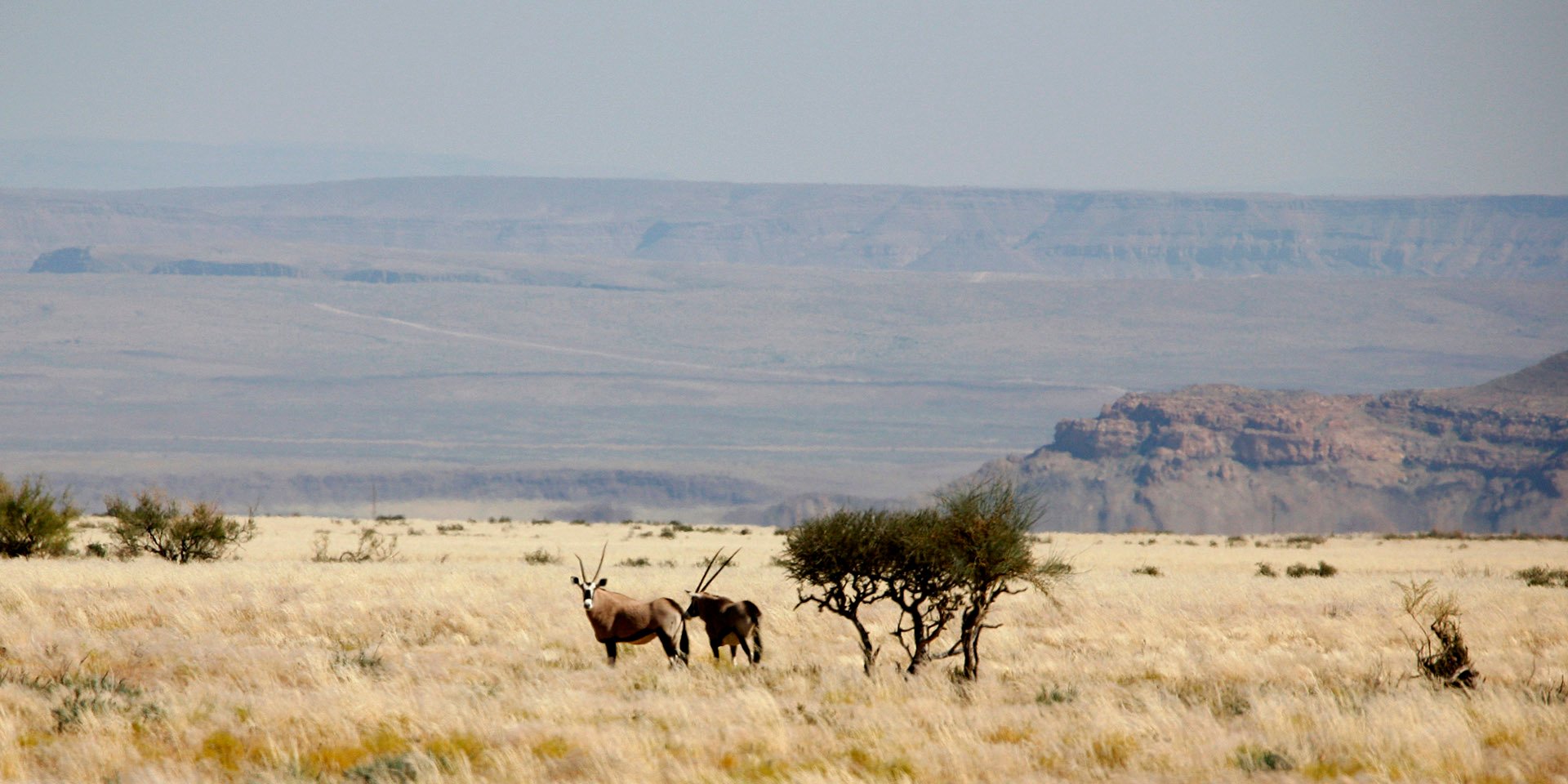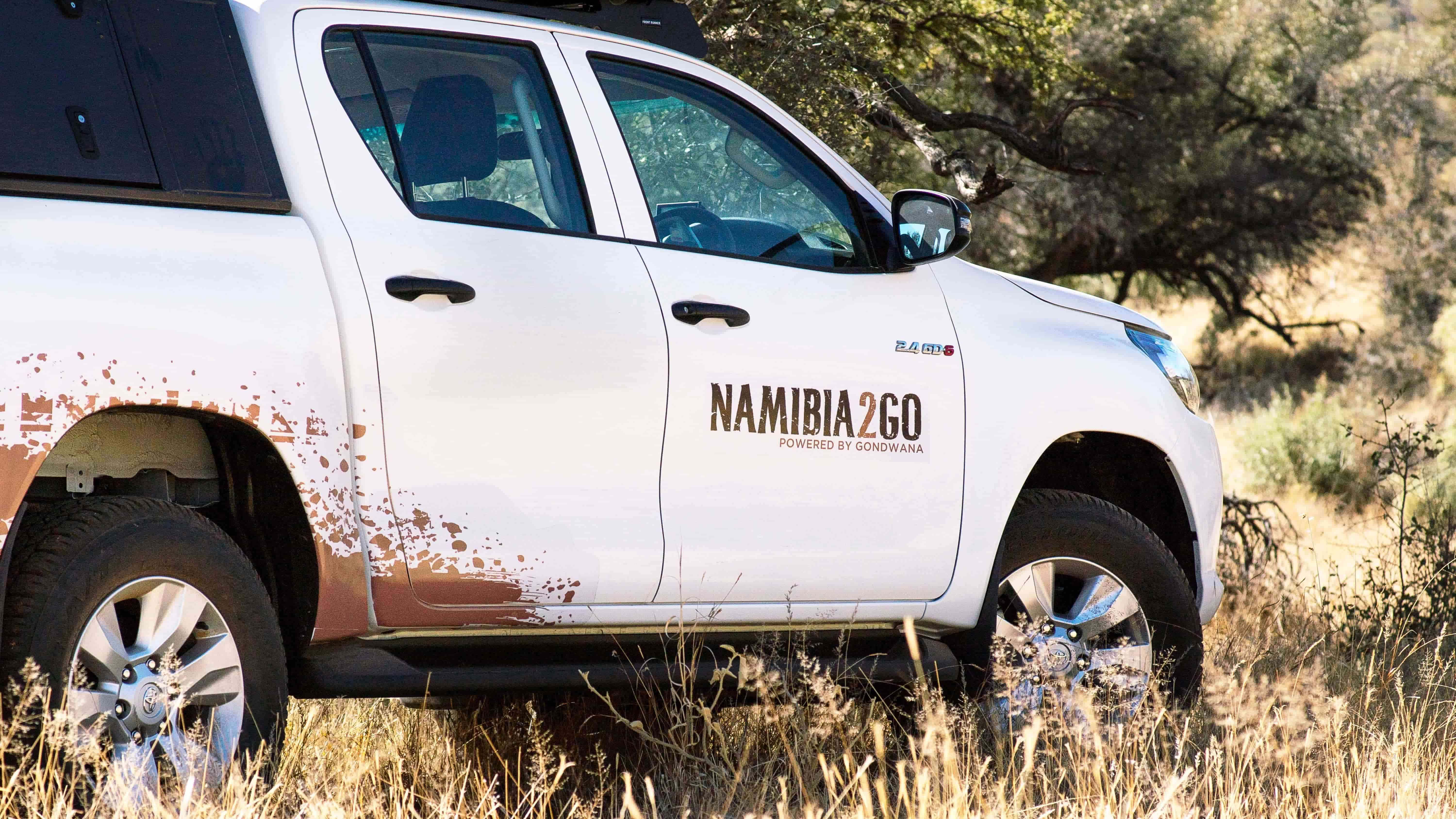In 1890 Albert Voigts from Meerdorf near Braunschweig in northern Germany travelled to South Africa to take up a job offered by fellow-countryman Fritz Wecke, a merchant in the Boer Republic of Transvaal. Wecke’s business was in Schoongezicht close to Schweizer-Reneke on the road between Johannesburg and Kimberley. He also traded with cattle. Soon after Albert Voigts, then 22 years old, had joined him, Wecke sent the young man to Damaraland in German South West Africa with two ox wagons full of goods which he was to trade for cattle with the Herero people in Okahandja. Albert Voigts set off on his first ox wagon trek on May 1st, 1891. It almost cost him his life. He later described the harrowing experience in a letter to his parents.
Already the first part of the way from Schoongezicht in a westerly direction towards Khuis was tough. Voigts and his party traveled with two fully loaded ox wagons, each of them drawn by a team of 18 sturdy oxen. The teams struggled to pull the wagons over the formidable sand dunes and had to go without water for four days and nights even before Khuis in the eastern Kalahari was reached.
From Khuis the trek had to cross the Kalahari to make it to Mier on the western side. It was a distance of 240 km without any watering places at all. This area now forms the southern part of the Kgalagadi Transfrontier Park shared by South Africa and Botswana. Albert Voigts allowed his party and the draught animals a week’s rest before setting off on their tour de force on Sunday, 27 June 1891.
“Soon the way became so difficult and the sand dunes so high that the oxen barely managed to drag the heavy wagons forward. If you haven’t seen the enormous sand dunes of the Kalahari you can hardly imagine how arduous it is to move over and between them. The wheels sink into the sand up to their axels without leaving a trace. Sometimes the oxen are already on their way down on the other side while the wagon is still struggling up the dune with moans and groans. (...)
Until Thursday we had been driving day and night almost without stopping. Then the oxen became so weak due to thirst and their exhausting labour that they broke down under the yoke. Towards evening we were forced to unhitch them and lead them to the water without burden.
I immediately set off with all the drivers, oxen and horses while my friend B. and the two other white assistants stayed behind with the wagons. According to Missimmys, my guide, we would arrive in eagerly awaited Mier already the next morning around 10 o’clock. Therefore I took neither water nor bread along – which would cost me dearly (...).”
In front of the Wecke & Voigts store in Okahandja: the trader McDougal, Herero chief Asser Riarua and Albert Voigts’ brothers Gustav and Richard. This was the place where cattle was traded for goods and then driven to the Transvaal by Albert Voigts. (Photo: Wecke & Voigts Collection)
Crossing enormous sand dunes, Albert Voigts and his party continued their trek through the desert without water. Eventually the oxen had no energy left, dropped onto the sand and had to be urged on with beatings. Some were so weak that Albert Voigts shot them to spare them the agony of dying of thirst. This is how he described his own condition and that of his companions:
“As a result of going thirsty my eyes, throat and lips had swollen terribly. Added to that, there was an unpleasant humming in the ears in the morning. The condition of my Basutos was similar, but the children of the desert were in much better shape. Jack (a San) was as happy as a lark.”
After three days of pushing on relentlessly without water they stopped for a break on Sunday night but were unable to relax. “The horses were (...) restless, whinnying, stomping their hooves and burrowing their noses into the ground to find relief for their burning thirst. Therefore we were back in the saddle after just an hour and didn’t get a minute of sleep. Soon after that the animals seemed to scent water, they stretched their necks and broke into a trot, which soon turned into a veritable race of sorts. We continued like that for several hours, until dawn when August, whose eyes were better than mine, spotted a light in the distance, then several lights and finally African huts. We arrived there just a few minutes later – this was the ardently awaited Mier (...).
I wanted to dismount but dropped to the ground and remained unconscious for several hours. When I came by the sun was already high above the horizon, oxen and horses had been watered and all my drivers were in the hut with me and sleeping like dead. Only Jack was outside to keep an eye on the grazing oxen while chatting up a beauty of his own tribe who he had found there in Mier. Oh, those Bushmen!!”
An old woman patiently nursed Albert Voigts back to health with spoonfuls of milk and water. He had narrowly escaped death but gathered valuable experience for subsequent ox wagon treks. Since he and his companions were in no condition to go back for the men and wagons left behind, he had to dig deep into his pocket to send villagers with their own oxen to fetch the remainder of his party. Before continuing to Damaraland they stayed in Mier for more than two weeks to recover from the exertion of crossing the desert. They reached their destination in August.
From 1906 Albert Voigts dedicated himself to farming on his farm Voigtsgrund. He was one of the pioneers of Karakul breeding in Namibia. (Photo: Wecke & Voigts Collection)
Against all odds the first ox wagon trek led by the young man from Germany ended successfully. The following year Albert Voigts again hauled goods to Damaraland, this time with his brother Gustav. Together with Fritz Wecke the brothers established a trading station in Okahandja: Wecke & Voigts, a company steeped in tradition, which has continued to this day.
The Gondwana History series is a selection of memorable glimpses of Namibia’s history. Collections of the stories are also published as several small volumes in English, German and Afrikaans. The latest one, Gondwana History III, was released in early June and is available at the offices of the Gondwana Collection in Klein Windhoek (42 Nelson-Mandela-Avenue), all the Gondwana lodges and in bookshops.







SUBMIT YOUR COMMENT